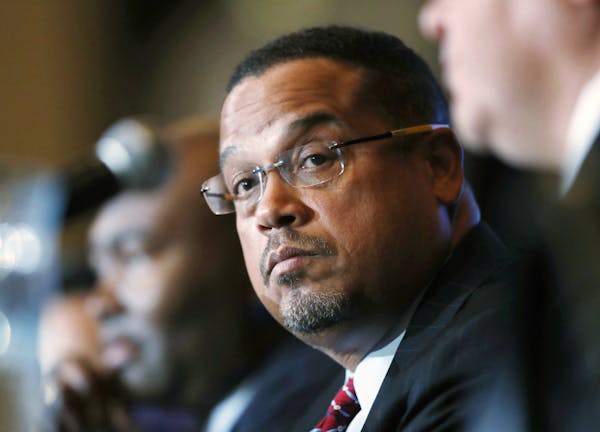It's still not clear to me why Fairview Health should merge with Sanford Health — but it is now clear to me why the University of Minnesota doesn't like the proposed deal in its current form.
It's because the U wants a relationship with Fairview, with or without Sanford, beyond the expiration of its current arrangement that expires in 2026.
While the Fairview and Sanford execs have committed to the existing deal, they've only said they're open to talking about the future.
But the state's largest medical school and academic health system needs assurance now that it's got a partner committed to its goals as well, Myron Frans, the U's finance chief, told me Friday after the Board of Regents heard details about the situation.
"Business goals are great, but there also needs to be a public policy goal as part of this deal," Frans said. "The university, as an academic health center, is core to that because we have to reach a new agreement."
He and other U officials also aim to work with other health systems, and to take in patients from those systems. The regents on Friday signed off on a medical teaching center in St. Cloud that's a venture between the medical school and Centracare, for instance.
"It's the considered opinion of people a lot smarter than me that University of Minnesota Medical School as Switzerland doesn't work," Frans said. "You need to have a dedicated community system as part of it."
U officials are meeting frequently with Fairview and Sanford executives. While the rhetoric has become a bit heated — with the Board of Regents Chair Ken Powell weighing in Friday morning — the outlines of a compromise are becoming clear.
There's still room for a deal that will satisfy all, Frans said. He said the U wants to regain control of "flagship assets," something that is negotiable. It wants its East Bank hospital back the most. "A deal has got to be worth it for them to partner with us and to support our academic health, which isn't cheap," Frans said.
In a separate interview Friday afternoon, Sanford CEO Bill Gassen said, "I'm very optimistic we'll get to the right place for all of us and for all Minnesotans."
Sanford and Fairview on Friday agreed to take another two months, until the end of May, to work out details of a deal, agreeing to a request made by Minnesota Attorney General Keith Ellison.
Gassen said he's open to forging an arrangement with the U that extends beyond 2026. "My comments to date have been that as a factual, legal matter, it doesn't have to happen in that way," Gassen said. "I don't want the interpretation to be that that's not what I want."
It's taken a while for the precise dynamics of the situation to become clear.
Over the last month of public hearings around the state and at the Legislature, a lot of attention went to the hot-button issues of abortion and gender-related care. Those are viewed differently in purple-state Minnesota than red-state South Dakota, where Sanford is based, and there's a risk of legal conflict down the road.
We've heard less about the finances of Fairview and Sanford. That's partly because both firms are nonprofits, and their disclosure requirements are limited. And when they announced the merger in November, executives downplayed financial issues.
But as the public discussion has progressed, Fairview executives spotlighted such challenges. The Minneapolis-based health system lost money in 2020 then made money in 2021, audits show. It lost money again last year, CEO James Hereford said at a legislative hearing on Jan. 30. Its relationship with the U adds some financial strain, Hereford said at that hearing.
Sanford has its own pressures that the merger may help resolve. While its largest hospitals are in Sioux Falls and Fargo, many are in smaller towns where aging, shrinking populations create a cost challenge. With Fairview, Sanford will be able to spread costs across a bigger base of customers in growing urban and suburban areas.
"We're likewise facing many of the same headwinds that other health systems across the country are experiencing today," Gassen said. He noted that its unaudited figures show Sanford finished 2022 in the black.
Like everyone in health care, Fairview and Sanford soon must contend with serving the giant baby boomer generation as it ages, inevitably needing more acute — and costly — care. Hereford has also said that by merging, Fairview and Sanford will be better able to cope with the growing size and pricing power of drugmakers and insurance companies.
Ellison's office is also waiting for more financial and other information from Fairview and Sanford. "Additional time is not enough on its own to ensure that Minnesotans' interests are protected," a spokesman for Ellison said.
Meanwhile, the Legislature is considering bills that would require the Department of Health to review such mergers. Specifics are still being hammered out.

Ramstad: Gov. Walz, things are not getting done in Minnesota

Ramstad: AI is English-centric, but it's picking up Hmong quickly

Ramstad: Minneapolis' Camden neighborhood is rising. Houston White wants to keep it that way.

Ramstad: Minnesota's big businesses are in crisis with a common problem


